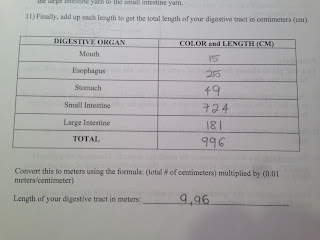Last Saturday morning I attended to a River Clean Up, it is not related to the class of Anatomy and Physiology but it is always good to help the community.
 As soon as we got to the creek they gave us gloves and a bag for pickup all the trash. During the couple of hour that I spent in the river I saw a lot of different types of trash that the people throw to the creek. I picked up a stack of crystals and also we found clothes, wrap of sweets and a pizza box.
As soon as we got to the creek they gave us gloves and a bag for pickup all the trash. During the couple of hour that I spent in the river I saw a lot of different types of trash that the people throw to the creek. I picked up a stack of crystals and also we found clothes, wrap of sweets and a pizza box.We walked by all the creek and while we picked up all these garbage.
 There was another thing that made me thinkin do more volunteer hours, the organization told us that they are not used to have that huge amount of volunteers. Basically the people does all these types of activities if it give them something in exchange.
There was another thing that made me thinkin do more volunteer hours, the organization told us that they are not used to have that huge amount of volunteers. Basically the people does all these types of activities if it give them something in exchange. We passed this cave and this explains why there was a pizza box or wrapping of snacks. The people go there for hangout but they don't get responsible of the cleaning.
We passed this cave and this explains why there was a pizza box or wrapping of snacks. The people go there for hangout but they don't get responsible of the cleaning.From this experience I had learn that the environment is super important for our lives and we should take care of it. If we want to have the opportunity of enjoy the nature we should clean it. Seen all this garbage I realize that the people don't take care of their own community and this only affect them and us.




























